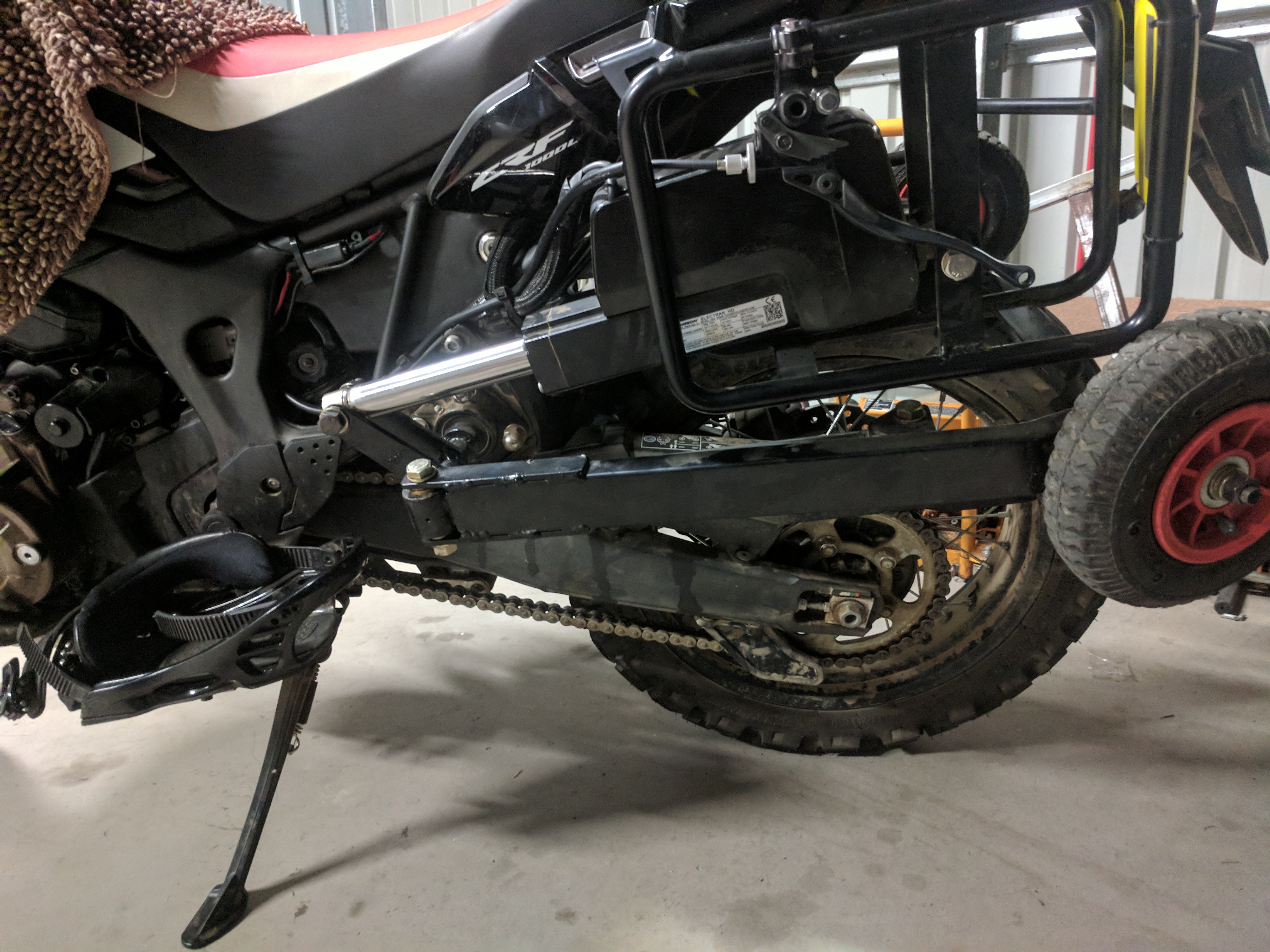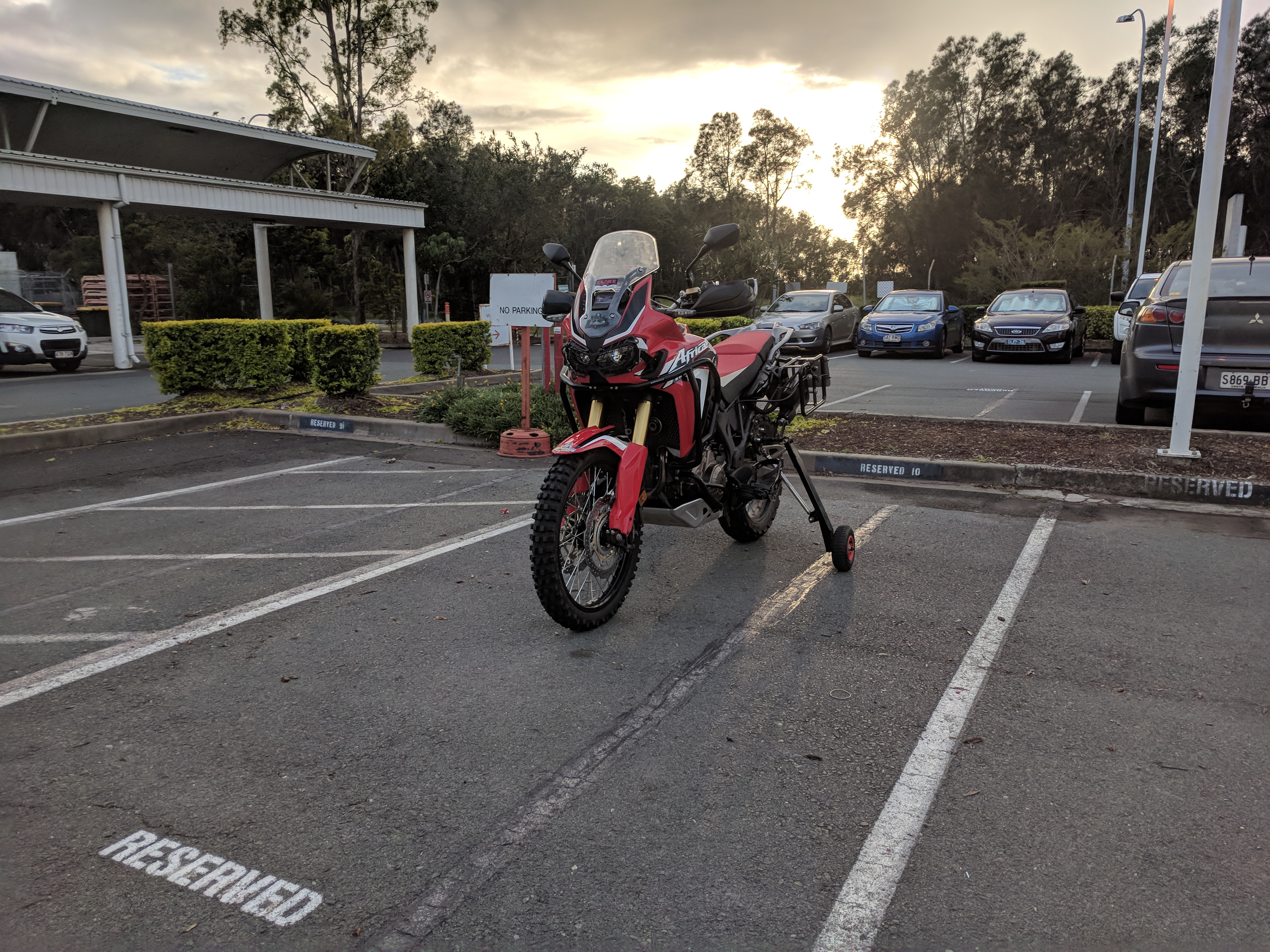When James Powell was repairing actuators on airplane landing gear as an aeronautical engineer, he never thought that he’d someday be using them to help him regain his passion for motorcycling. However, after a riding accident in 2009 left him wheelchair bound for life, his professional background played an instrumental role in getting him back on the road.
Powell doesn’t remember much about the accident itself. “I was on my way to work, and the next thing I knew, I was waking up in the hospital, unable to walk,” he said.
Determined not to let this disability limit his enjoyment of life, Powell learned to do everything from driving a car equipped with hand controls to wheelchair bungee jumping and body-building (he is a six-time champ within Australia). But riding --particularly on two wheels -- was a major source of gratification and freedom missing for him.
“I used to enjoy unlimited access to the outback, forests and beaches,” he said. “I wanted to be with my friends, riding through the bush country again. My only option was a four-wheeled quad bike, but that is quite restrictive.”

Powell back on the road after using a Thomson Electrak® HD actuator which helped him add a retractable stabilizer to his bike
Quad bikes are not allowed full registration in Powell’s native Australia, even as transportation for disabled individuals. Riders must provide authorities with exact times and dates for every ride as well as proof that they have permission from the owner of the property on which they plan to ride. Powell spent four years trying to petition authorities for exceptions with no luck, then began researching quad alternatives with hopes of getting back on two wheels.
Engineering a design plan
Since motorcycle controls are on the handlebars, operating this type of vehicle would not pose a problem, but because Powell had no use of his legs, stabilizing the bike during a stop would present a major challenge. His research revealed some stabilizing wheels available on the market, primarily to lend confidence to beginning riders, but none provided the reliability and sturdiness he would need for the bush and the outback.
Channeling his engineering days, Powell concluded that building a custom system was his best option and knew that the secret to his success would lie in selecting the right actuator to drive the lowering and raising of stabilizing wheels. These wheels met disability modification requirements for motorcycles and would thus be subject to fewer restrictions than quad bikes.
“I needed something that was lightweight, and I wasn’t going to get that with a hydraulic pump system, which would be too bulky for use on a motorcycle,” said Powell. “Plus, I couldn’t find anything that would have been fast enough or strong enough. I needed something that could deploy rapidly. It also had to be robust enough to lift my weight and serve me for a long time. I also looked into pneumatic systems, but even though they are quick acting, they did not have the strength I was looking for.”
The smart solution
After a few false starts with systems using dual actuators, Powell took the advice of a local automotive technology distributor who suggested that heavy duty electromechanical linear actuators from Thomson Industries, Inc. would be best suited for the rugged conditions he would encounter.
“I started with a list of several actuators that would have been sufficient for my basic needs and compared their spec sheets for weight, speed, current draw etc.,” he said. “The Thomson actuator was slightly heavier than the others, but its IP rating and strength proved to have the robustness I needed.”
Powell designed his stabilizer using a Thomson Electrak® HD actuator (Figure 1). This ball screw type actuator is known for its high power, longer stroke, onboard electronics and unmatched ruggedness. It has an ingress protection rating of IP69, which means it is highly resistant to mud, inclement weather, dust and other extreme conditions.

Figure 1. The actuator and carriage system attach to the back of the bike with only two bolts
The onboard electronics of the Thomson actuator also enabled him to customize controls. An encoder built into the actuator tracks its position and relays it to a small computer that Powell built to read the signals and display them on the handlebars, enabling him to control the actuator. Once the bike is rolling, he simply raises the stabilizers, and when he is ready to stop, lowers the wheels ̶ much like a pilot would deploy airplane landing gear

Powell is back on his bike with the help of the stabilizer which is used when he stops
“The Thomson actuators were very easy to work with,” he said. “I had built the overall mounting structure from scratch to accommodate it, so mounting was just a matter of tightening two bolts and connecting a couple of wires.”
The modified motorcycle is now fully tested and in steady operation, and Powell is enjoying his rediscovered freedom to ride -- and stop -- whenever and wherever he pleases.
More information on Thomson Electrak® HD actuators is available at: https://www.thomsonlinear.com/website/com/eng/products/actuators/electrak_hd.php


